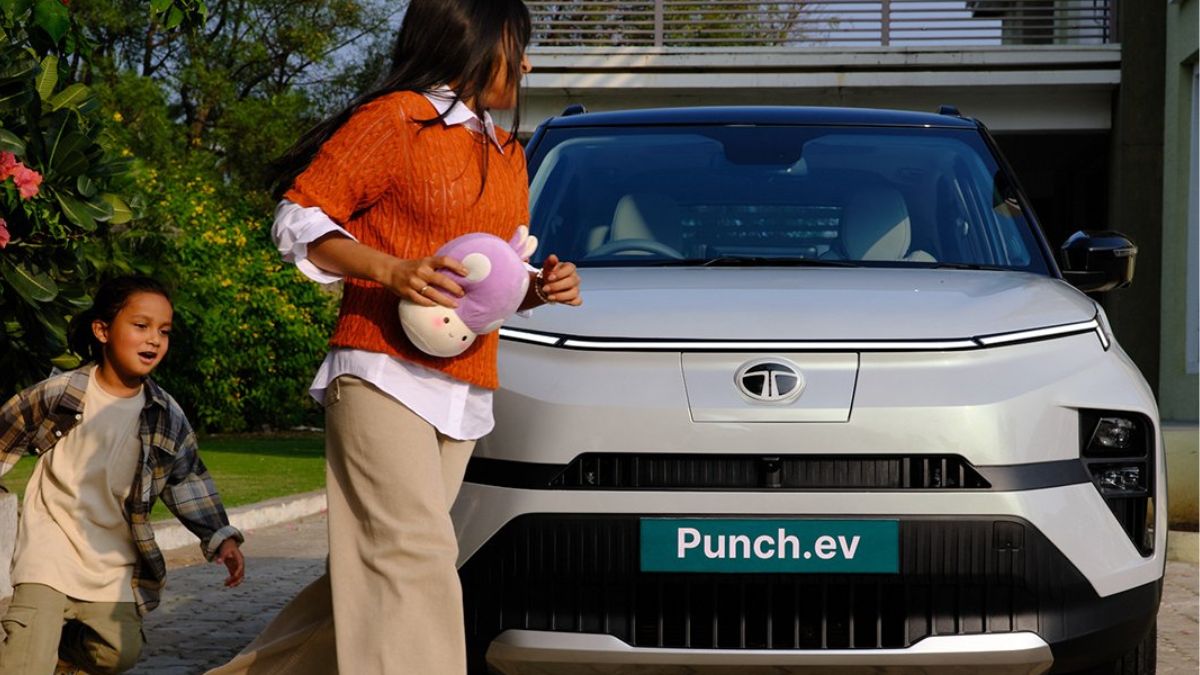Tata Motors was among the biggest losers on Sensex on May 14: Here is why

Tata Motors was among the biggest losers on the BSE Sensex on Wednesday, with the shares of the homegrown car and truck maker declining more than 3 per cent before settling 1.3 per cent lower end of the day.
The company reported a 51 per cent drop in consolidated earnings for the January-March quarter, mainly due to an accounting boost a year ago. The cloudy outlook amid the trade tensions, especially for Jaguar Land Rover, has Dalal Street investors concerned.
Tata Motors had reported a consolidated net profit of ₹8,470 crore in the quarter ended March 31, 2025, compared with ₹17,407 crore in the same quarter a year ago. Consolidated revenue for the quarter was also tepid, up just 0.4 per cent to ₹1.19 lakh crore.
The company has faced challenges on the sales front, with global sales declining 3 per cent to 3.66 lakh units in the fourth quarter. In the domestic commercial vehicle business, wholesale volumes were down 4.8 per cent from a year ago to 99,600 units. In the passenger vehicle business, volumes were down 5 per cent at 1.47 lakh units.
At Jaguar Land Rover, its British luxury unit, wholesales were up 1 per cent at 1.11 lakh units in January-March. JLR revenue for the fourth quarter was down to £7.7 billion from £7.8 billion, while profit before tax was up to £852 million from £661 million.
The road ahead looks bumpy for JLR what with the tariff-related concerns in the United States. The decline in sales in China, another big market, added to further troubles.
"JLR profitability ahead would remain under pressure as volumes to remain uncertain in an inflationary pricing (due to tariffs as things stand today) and macro concerns in key end markets, especially China," said Deep Shah, lead analyst at Yes Securities.
In March, US President Donald Trump announced 25 per cent tariffs on vehicles and parts imported into the United States. Against this backdrop, JLR paused US shipments temporarily in April, recommencing at the month-end.
While on May 8, the US and the UK announced a trade deal that includes a quota of 100,000 car exports from the UK to the US at a 10 per cent rate, sales of its Defender and Discovery SUVs from Slovakia are still subject to 27.5 per cent tariffs.
"We are facing significant headwinds, particularly the evolving global trading environment," JLR has said.
Kumar Rakesh of BNP Paribas Securities India expects the US tariffs on the UK and Europe will impact JLR margins by 120-350 bps, based on how much of that the company can pass on to customers.
The standalone business is in the midst of cyclical volume moderation in both passenger and commercial vehicles, pointed Shah, adding heightened competition in passenger vehicles can drag earnings momentum.
The company has lost market share in the domestic CV market and Tata Motors executives have said they will look at improving Vahan market shares in all segments.
It wants to "win back" share in the small commercial vehicle segment by increasing penetration in pickups through repositioning its existing product Intra and launching new products this year like the Ace Pro.
In the electric vehicle segment, Tata Motors saw a 12.9 per cent drop in volumes and while it remains the market leader, its market share has declined to 55.4 per cent from 73.1 per cent.
The company has said it will strengthen its EV offerings this year. The new Harrier EV is expected, followed by the Sierra EV.
Overall, on the PV side, it aims to expand the network in key markets and it will be skewed towards large format stores.
Chirag Jain of Emkay Global Financial Services says while near-term growth challenges persist, profitability and therefore balance sheet health should largely sustain, led by a focus on product mix and costs. He has, however, cut earnings per share estimates on Tata Motors by 2-3 per cent.
BNP Paribas too has cut its consolidated earnings estimates for Tata Motors by 2-8 per cent for 2025-26 and 2026-27.
Business